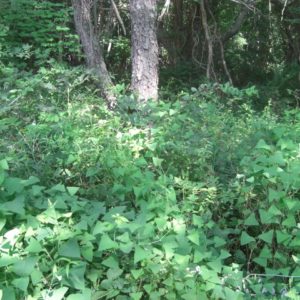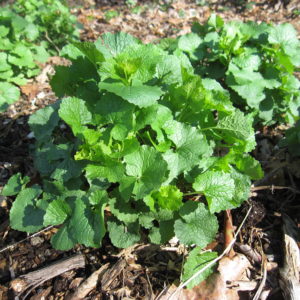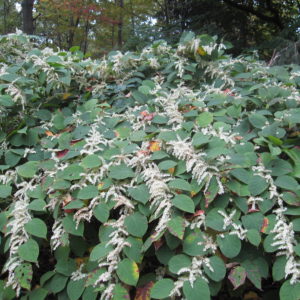Click an image to help identify what you see outside, then continue to the removal page for more photos.
A weed is often defined as a wild plant growing where it is not wanted and in competition with native and cultivated plants. Here we describe an unwanted, non-native plant as an invasive herbaceous plant (simply known as a herb). Forb, herb or herbaceous are terms used for any non-woody plant that we’d generally call a “wildflower.” These unwanted invasive herbs tend to flower earlier than natives, often have a longer flowering season, were introduced from another country, and consequently, out-compete our native plants.
And while herbaceous plants have no persistent woody stem above ground and die down at the end of the growing season, they live on through seed dispersal and/or persistent root systems. Herbaceous plants may be annuals, like mile-a-minute that dies to the ground after flowering, fruiting and dropping seeds, only to regrow from seed the following year; biennials such as garlic mustard that also dies above ground, but the roots survive for the second year when the plants flower, fruit then drop seed, to grow only from seed the following year; or perennials such as lesser celandine, Japanese knotweed, and wild garlic that regrow yearly from roots, bulbs, corms, stolons, rhizomes as well as by seed. Most ferns and grasses are perennials.





